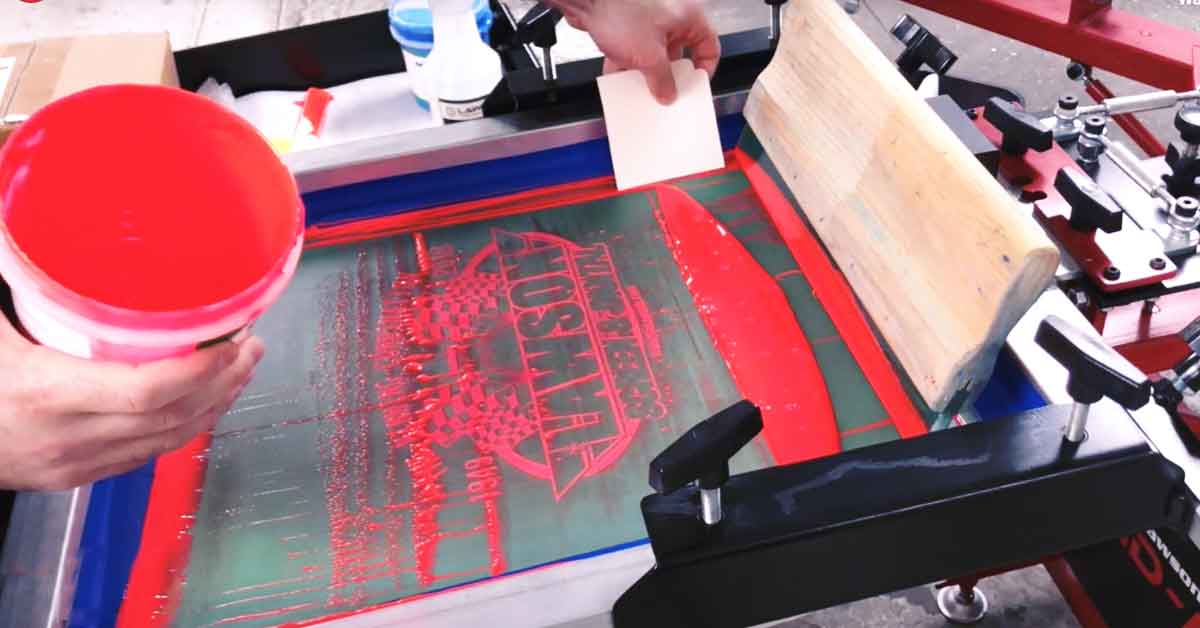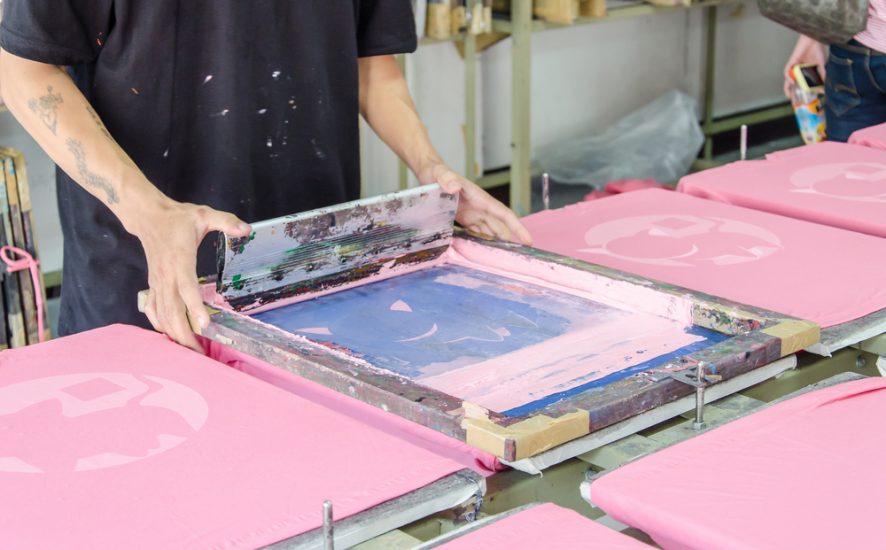A Biased View of Tx Tees
Table of ContentsLittle Known Facts About Tx Tees.Facts About Tx Tees RevealedTx Tees Things To Know Before You Get ThisThe 30-Second Trick For Tx Tees7 Easy Facts About Tx Tees ExplainedGetting My Tx Tees To WorkThe Definitive Guide for Tx Tees
Add up various other costs, like the number of energies it takes to run the shop and the expense of ink and emulsion per style. Take the print below.The emulsion ought to just be a couple of cents since you 'd only need to coat one display for this work. Just how much should you bill per t shirt to make a profit? Typically, printers try to make up to 45% revenue on a print task. Below's a table to aid you identify that: overall expense per product percent of preferred revenue as a decimal (instance:.25 or.45) earnings made per thing per work Currently allowed's discuss the profitability of DTF.

With DTF, you can publish a handful of t shirts, or just one. Both screen printing and DTF have their niches in the world.
Some Known Factual Statements About Tx Tees
The most effective way to know? Ask about and see what printing shop like your own are doing. custom t-shirt design. Attempt both out and see which you like far better
When you're choosing what type of printing technique to utilize for publishing your art work styles on your garments, it is necessary that you know the differences between these two techniques so you can optimize outcomes while decreasing costs. Screen printing is the most typically made use of strategy for publishing layouts on fabrics.
DTG printing is likewise recognized as place or straight to garment printing since it prints only what is needed rather than making a screen as display printers do. https://issuu.com/txtees02. Screen printing functions by screen filler squeegee display printing ink screen mesh display, then transferring the image to garment utilizing heat and/or stress
The DTG printer uses special dye-sublimation inks that are used into a pre-designed picture by a digital printing system. The inks end up being component of the material, permitting for dynamic shades and extraordinary information. It's also called spot or direct to garment printing due to the fact that it prints just what is required rather than making a screen as display printers do.
Not known Factual Statements About Tx Tees
It's much faster - you can print a fullcolor image in minutes, as opposed to hours for screen printing. Second, there's no set up time or costs involved - you can print any design you such as, without having to develop a display. Third, there's no waste - due to the fact that display printers display print one style each time, they have to screen each color separately.
The paper is very expensive and can only be made use of as soon as. Once it's published on, it needs to be disposed of. - The preliminary purchase price is less than the upfront financial investment of DTG printers- You can publish multi-color styles one screen at a time rather of needing to print each color separately like DTG printing.

The Of Tx Tees
Nevertheless, rather of using screen mesh as display printers do, color sublimation printers use laser innovation to move your photos onto garments or paper. A heat process transfers the color from its solid-state straight right into the gas stage which in turn fuses it onto material substratums when they are quickly warmed to high temperature levels under high pressure.
Sublimation printing is environmentally friendly. It utilizes much less water than screenprinting, and due to the fact that it does not entail making use of harmful solvents, it's safe for all sorts of apparel. The dye sublimation inks are also odor-free when treated, unlike display printers that use damaging chemicals during the screen printing process that leave behind an unpleasant odor.
They also save money on costly equipment like direct exposure devices given that color sublimation printers do not call for a UV direct exposure system or a flash remedy oven that is generally used in screen printing (custom cap printing). What is direct to garment printing (DTG Printing)? DTG printing is a digital screenprinting procedure these details that publishes directly onto fabric using specialized inkjet printers
Excitement About Tx Tees
DTG printing uses numerous advantages over typical screenprinting, including the ability to print photographic quality images, better color vibrancy, and the ability to publish layouts on darker fabrics. DTG printers function by heating the fabric ink till it transforms right into a gas. The gas then permeates the material, bonding with the fibers to produce an irreversible print.

Display printers just prepare their screen then begin publishing up until they run out of product or ink.- There is a large range of knowledgeable screen printers all over the world, which can be helpful for newbies. - It's a slower procedure - screen printers frequently have to await the ink to completely dry before they can publish the following color- Screen printers call for manual work, so there's a higher learning curve and it takes longer to generate a high-quality layout- Screen printing isn't as accurate as DTG printing, so you might get some "blood loss" of colors from one part of the photo onto one more otherwise done appropriately.
Our Tx Tees Statements
Rather of using display mesh as display printers do, color sublimation printers utilize laser modern technology to move your images onto garments or paper. A warm procedure transfers the dye from its solid-state straight into the gas phase which consequently integrates it onto material substratums when they are swiftly heated to heats under high stress.
Sublimation printing is environmentally friendly. It makes use of much less water than screenprinting, and because it doesn't include making use of damaging solvents, it's secure for all sorts of apparel. The dye sublimation inks are likewise odor-free when cured, unlike screen printers that make use of harmful chemicals during the screen printing process that leave behind an undesirable smell.
They additionally conserve money on costly equipment like exposure systems considering that color sublimation printers do not call for a UV direct exposure device or a flash cure oven that is generally utilized in screen printing. What is direct to garment printing (DTG Printing)? DTG printing is a digital screenprinting process that prints directly onto material utilizing specialized inkjet printers.
Not known Facts About Tx Tees
DTG printing provides many benefits over standard screenprinting, including the ability to print photo top quality pictures, greater color vibrancy, and the capability to publish designs on darker textiles. DTG printers function by heating the textile ink up until it becomes a gas. The gas then permeates the material, bonding with the fibers to create an irreversible print.